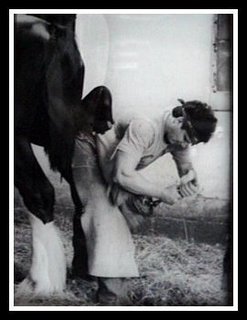Governor vetoes abortion-pain bill

Governor Jim Doyle who holds a law degree from UW-Madison, has vetoed the Law to require women seeking an abortion to be given the option to have the fetus given a pain killer. Despite testimony by experts, Gov. Doyle, a lawyer not a doctor, determined there was no scientific proof that a fetus felt pain.
Wisconsin Governor Jim Doyle vetoed legislation on Friday that would inform women about the pain their baby would feel during an abortion after 20 weeks of pregnancy. Pro-life groups were disappointed by the veto because the information would be something women wouldn't ordinarily receive from an abortion business.
Despite testimony from leading experts in the field, Doyle claimed no proof exists that unborn children feel pain. He said the state legislature should not be allowed to make scientific decisions.
"It would be reckless to inject a requirement that doctors communicate unproven science to their patients during an already difficult and sometimes traumatic time,'' Doyle said in his veto message. "This bill intrudes on the doctor-patient relationship ... and contravenes the requirement that doctors provide objective and accurate information to their patients."
Several experts in embryology testified in the state legislature that unborn children have the capacity to feel pain and several told lawmakers that's the case. They include Steven Calvin, perinatologist at the University of Minnesota; Robert J. White, professor of neurosurgery at Case Western University; and Paul Ranalli, neurologist at the University of Toronto.
Under the measure, women would receive the fetal pain information and be allowed to have anesthesia administered to the baby before the abortion. Pro-life groups strongly supported the measure and hope it will persuade women to opt against an abortion.
Since the law only required the information to be offered to women having abortions after the fifth month, it is hard to accept Gov. Doyle's conclusion knowing that premature babies born before the fifth month experience pain. The only way his assertion could stand would be if the baby's nervous system doesn't kick in until birth. However; for those wishing to see more scientific results I've included the following from The American Pain Society:
Fitzgerald (1987, 1994), who has reviewed the biological development of the fetus and examined the possibility of fetal pain at each stage of development. At 7.5 weeks' gestation, reflex responses to somatic stimuli begin, and touching the perioral region results in a contralateral bending of the head. The palms of the hands become sensitive to stroking at 10.5 weeks, and the rest of the body and hindlimbs become sensitive at approximately 13.5 weeks. Shortly after the development of sensitivity, repeated skin stimulation results in hyperexcitability and a generalized movement of all limbs. This hyperexcitability has been interpreted as evidence for the presence of a functional pain system, reflecting an immature but intact pain response with early hypersensitivity to stimulation (Barr, 1994). This view is not widely accepted, however, and is rejected by Fitzgerald herself. Prior to 26 weeks, the thalamocortical fibers have not yet penetrated the cortical plate, and it seems unlikely the cortical structures considered necessary for pain are responding to noxious stimulation (Mrzljak, Uylings, Kostovic, & van Eden, 1988).
Abortion advocates have a capacity to ignore inconvenient facts. This law would not restrict abortion in any way, except by the choice of the mother. Choice is what I thought the argument was all about.
Christian Carnival #104
UPDATE: Please take the time to read the whole article the second quote is taken from. I included this portion because I found the conclusion curious.








 BlogHop.com
BlogHop.com







2 Comments:
|So he suggests that at 6 months it can feel pain. In the full article the quote is taken from is this:
n 1987, The Lancet published an article that demonstrated neonates receiving fentanyl anesthesia in preparation for surgery have improved clinical outcomes compared with neonates receiving nitrous oxide and curare (Anand, Sippel, & Aynsley-Green, 1987). This research, and subsequent studies, led to a major reconsideration of neonate analgesic practice (Fitzgerald, 1987; Anand & Hickey, 1992).
But that is not the situation today. Roe has creeped to allow abortion at any time. Hence the need for anesthesia.
Post a Comment
<< Home